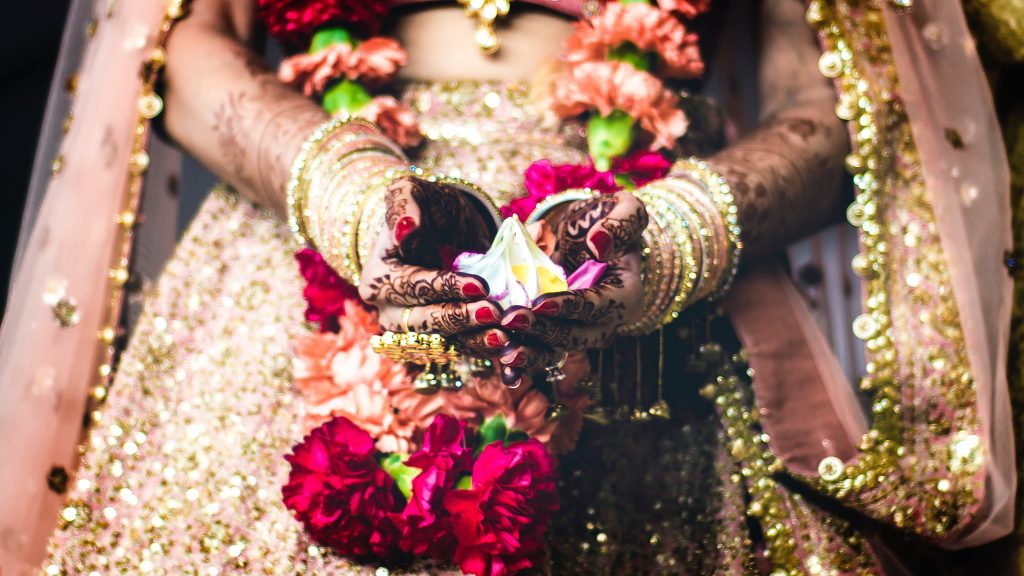In all its glory and beauty, Hindu weddings are steeped in tradition which many people don’t necessarily understand. In all honesty, explaining this could take a while, so we’ve tried to simplify the details and just give you the basics to a traditional Hindu Wedding and what it entails:
View this post on Instagram
Sangeet
Directly translated, the word ‘Sangeet’ means music, which is rather fitting considering what the Sangeet is about. This event has both the families of the groom and bride come together and celebrate in the form of song and dance. Put simply, this is just one huge party generally celebrated a few days before the actual wedding ceremony takes place. Wedding guests and the bridal party are able to either perform choreographed dances or perform certain songs, if they’re brave enough. Nerves aside, with amazing food, plenty of family and great music, the Sangeet is definitely one of the nights most memorable from the entire wedding celebration.
View this post on Instagram
Mehndi Party
The mehndi party, generally done 2 to 3 days before the wedding, is celebrated by the bride’s family. At this stage of the celebrations, henna is applied to the bride’s hands and feet in a decorative pattern. Mind you, this does take some time, which can be anywhere from 2 – 6 hours depending on how intricate the patterns are. Brides would hire a mehndi artist who would also apply henna to her guests who wished to have their hands decorated for the wedding as well. Applying the initials of the groom somewhere on the bride’s hands is also a tradition that seems to have been passed down from generation to generation.
View this post on Instagram
Hurdee / Haldi Evening
A cleansing prayer done by both the bride and groom. Most of the time it is separated as the bride would do so in her house and the groom would do it at his. The actual ceremony consists of a hurdee or haldi paste applied to the exposed skin of the bride and groom; their hands, feet, face and neck. The haldi paste is made of turmeric, gram flour, curd, sandalwood and rose water and is said to give the couple their bridal glow. The haldi is done the night before the main wedding ceremony and in most cases, turns into another celebratory event. Not that we’re complaining!
View this post on Instagram
Wedding Ceremony
The actual wedding ceremony is a colourful affair with guests dressed up for the occasion as they witness the beautiful vows and prayers being performed. The actual wedding ceremony is made up of a few rituals all significant to the marriage union. One of the most significant factors is that the actual wedding date is chosen by a priest. Astrology plays a very important part and hence determines the best time and date for the couple to wed. Fire is another very significant part of a traditional wedding as it is always present during a rite of passage, such as births, deaths and marriages. Red powder known as ‘indoor’ is applied to the forehead and centre part of a woman’s head, symbolizing her status as a married woman to the world. This is also why most brides opt to wear red for their weddings.
View this post on Instagram
Reception
A reception will generally follow on from the wedding ceremony which is seen as the celebration of the wedding and partying through the night. There is not necessarily a ritual performed during the reception, just a chance for the couple to mingle with their guests, be congratulated on the wedding and dance the night away. Not a bad way to end off a 4-day wedding affair.
View this post on Instagram
Bidai
The last, and probably most tearful part of a wedding, the bidai, is where the bride bids farewell to her family. In previous times, once the bride marries her groom, she is officially leaving her family to join the family of the groom. This could be her first move out from home or moving to another place where she won’t see her family that often. This is a rather bittersweet moment and usually lots of tears are shed for loved ones.
Also to be noted, these are traditions passed down from generation to generation, so modern times have changed things slightly, although many of these are still followed today.
By Yashna Balwanth
Feature image: Unsplash




















